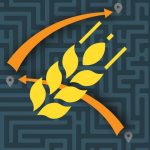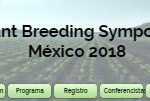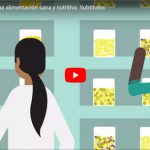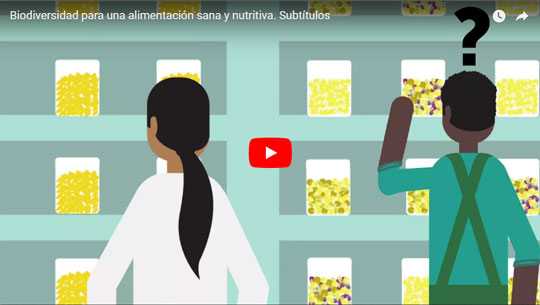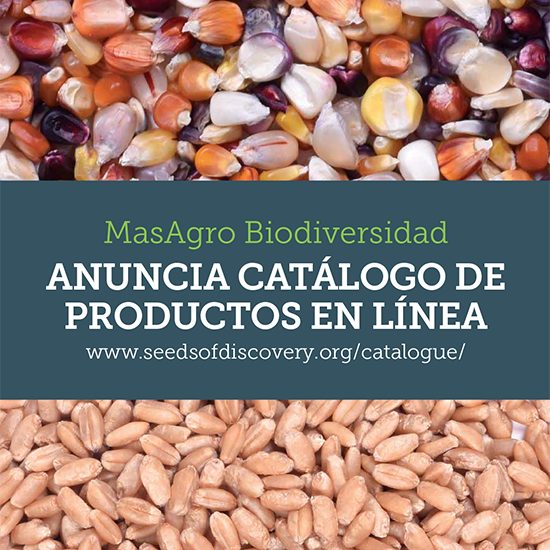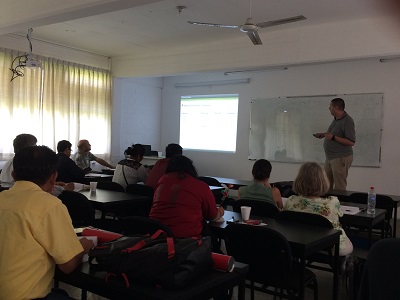-
Test Workshop
These are germplasm bank landrace accessions that are promising for use in research and pre-breeding for drought tolerance at flowering and grain fill stages of the crop life cycle. They have been identified based on analysis of geographical information system (GIS) descriptors and associated climatic data for their location of origin. Adaptation-based, e.g. lowland tropical or highland, panels have been developed comprising 500, 250, 100 and 50 landrace accessions. These panels maximize and maintain representativeness of the genomic diversity of the broader landrace collection of interest.
Primary User(s)
Maize breeders for whom drought tolerance is a crucial priority trait; maize breeders and geneticists investigating physiological and molecular basis of drought tolerance; researchers engaged in gene discovery for drought tolerance.
-
-
Product details and features
- Accession panels identified with descriptors (BankAccNo and GID) required for online ordering
- All accessions available for distribution from the CIMMYT Germplasm Bank
- Passport and GIS-derived data for accessions available in flat file and searchable format through Germinate (http://germinate.cimmyt.org/)
- Any available phenotypic data for the accessions available through Germinate
- Genotypic data for accessions available through Germinate
- Genotypic data for accessions available through Germinate
- Primary selection of accessions from drought prone environmnets used the following criteria: Growing season precipitation > 300mm, growing season mean aridity index >0.3, Aridity index during flowering and grain fill period >0.3<0.65.
- Summary of analysis and selection methods provided in Dataverse
- Summary data file providing results of multidimensional scaling of genomic distance with relevant passport, GIS and phenotypic data, provided through Germinate/Dataverse. File formatted for visualization in the software CurlyWhirly (https://ics.hutton.ac.uk/curlywhirly/)
Product Status
Available in August 2017
250 seed of each accession availible upon request via 250 seed of each accession availible upon request via http://www.cimmyt.org/seed-request/#maizeComments
These are unimproved materials, most suited for research or for large breeding programs interested in exploring exotic germplasm sources. These landraces are open pollinated materials carrying significant genotypic and phenotypic heterogeneity and heterozygosity. Those interested in these products may also be interested in semi-inbred Drought Tolerant Bridging germplasm.
Test Workshop
For more information
- Please contact Sarah Hearne (s.hearne@cgiar.org) or Carlos Garay (c.garay@cgiar.org).
Internal Information (not publically displayed)
- Numbers of associated germplasm requests and requestor identity
Key Users with whom quality specifications were discussed/agreed:
-
Terry Molnar
Kai Sonder
Denise Costich
News
NEWS
- Wheat phenotyping workshop
The International Maize and Wheat Improvement Center (CIMMYT) extends a cordial invitation to participate in the training workshop "Wheat phenotyping for the identification of germplasm with high yield potential and tolerance to drought and heat". This will be held in CIMMYT HQ, Texcoco, State of Mexico, on September 28th, 2018 (from 9:00 – 14:00 hrs) as part of the II Plant Breeding Symposium México 2018 (https://trasmejoragen.wixsite.com/inicio) The objective of this workshop is to train participants in the phenotypic characterization of wheat germplasm. Research themes include: climate change; priority characteristics for wheat for Mexico; phenotyping of genetically diverse materials and in the ...
- II Plant Breeding Symposium Mexico 2018
MasAgro Biodiversity announces the II Plant Breeding Symposium Mexico 2018 which will be held on September 6 and 7, 2018 at the CIMMYT HQ, Texcoco. Mexico. This event belongs to the series of DuPont Plant Sciences Symposia. For more information please visit the website:https://trasmejoragen.wixsite.com/inicio
- New video: Crop biodiversity for healthy, nutritious livelihoods
Erratic weather, poor soil health, and resource shortages keep millions of maize and wheat farmers in developing countries from growing enough to feed their households and communities or to harvest a surplus to sell.
- 3rd KDSmart app workshop
The International Maize and Wheat Improvement Center (CIMMYT) extends a cordial invitation to participate in the training workshop on the use of the KDSmart app. This will be held in Texcoco, State of Mexico, on December 20, 2017 (from 9:00 - 17:00 hrs).
